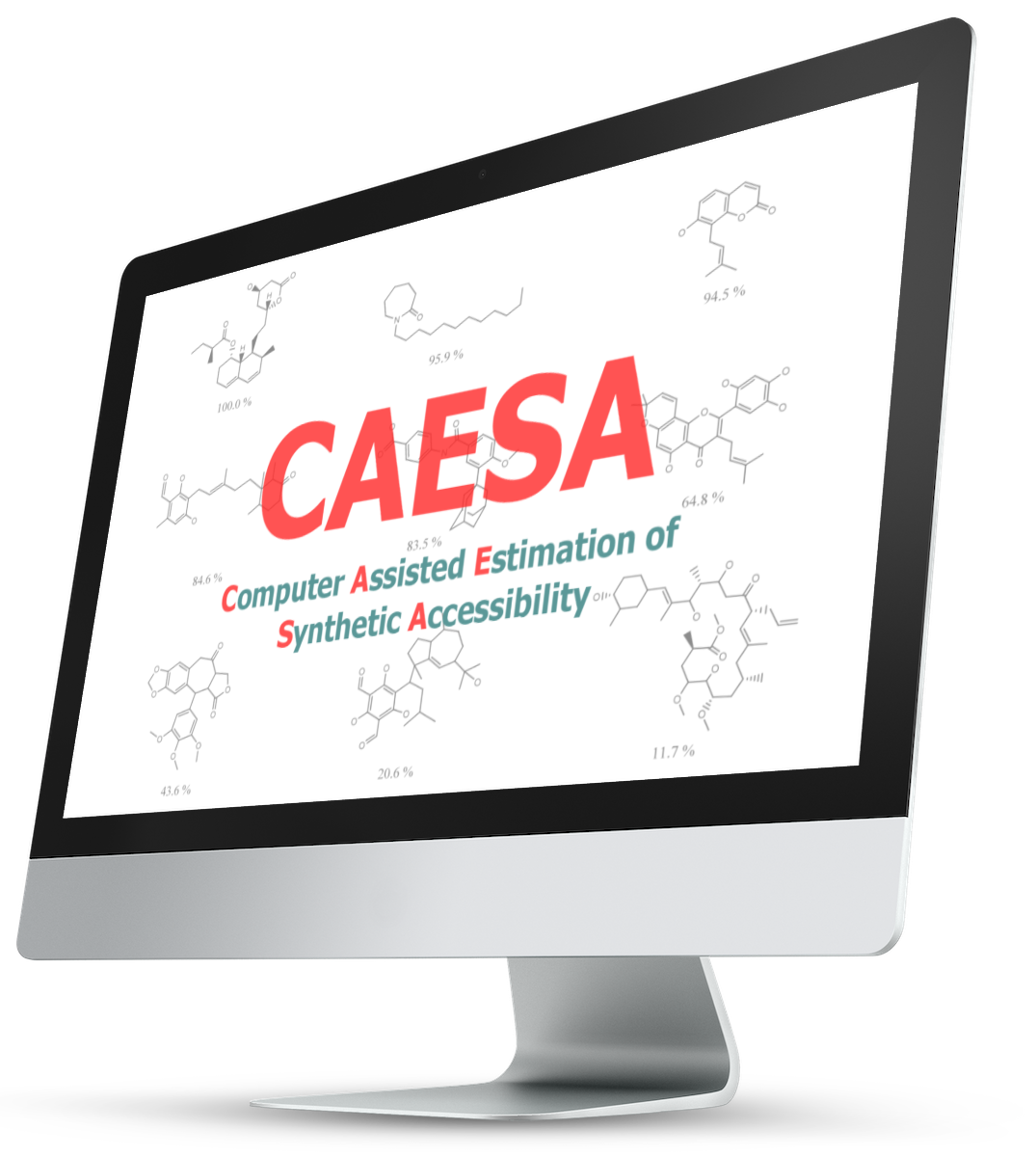CAESA
Estimate synthetic accessibility

CAESA is aimed at users who wish to order their molecules based on their ease of synthesis
CAESA (Computer Assisted Estimation of Synthetic Accessibility) automatically ranks sets of molecules according to their ease of synthesis and displays the synthesis route.
The program uses the technology of expert systems to mimic methods used by an experienced synthetic chemist to estimate the ease of synthesis of a particular compound. Potential starting materials are selected from databases of available compounds and the structural features that make a compound difficult to synthesize are identified. The combination of these two types of information provides a realistic estimate of the likely ease of synthesis.
Potential starting materials can be rapidly searched within the databases of available compounds (such as the Fine Chemicals Directory or in-house databases). Potential synthetic routes are established between all compounds in these databases and the target structures.
The length and quality of each route are assessed and the best are selected. The user is provided with structures of the potential starting materials along with information concerning the quality of the synthetic routes from the individual starting materials.
Customization
CAESA uses two sources of information that can be customized to provide estimations specific to your own needs:
- The database of available starting materials: This database is customizable with a converter program provided in the CAESA package. This converter takes custom databases in MDL Molfile format and converts them off-line into an internal CAESA format.
- The reaction knowledge base: This knowledge base is described in a text file which can be manually edited to include your own reactions in the reaction knowledge base. There are about 180 basic reactions supplied with CAESA. The reactions are described in a pattern language called PATRAN, which is an ASCII (human readable) pattern language designed specifically for reactions. It is similar to the SMILES notation but extended to specify reactions. PATRAN also allows usage of generic atom types.
What’s in the box
- Is an easy-to-use command line tool
- Has a web interface for submitting your molecules and visually reviewing the results
- Ranks molecules according to their ease of synthesis
- In the web interface, the established synthetic routes are displayed along with the quality of the synthetic routes from the individual starting materials
- Enables you to create your own database of available starting materials
- Allows you to customize your own reaction knowledge base
- Loads the input molecules in MDL Molfile format
Get in touch
You need a high-performing, reliable and easy-to-use software solution to speed up your next big scientific breakthrough. Getting the right solution is integral to advance your research and workflow.

